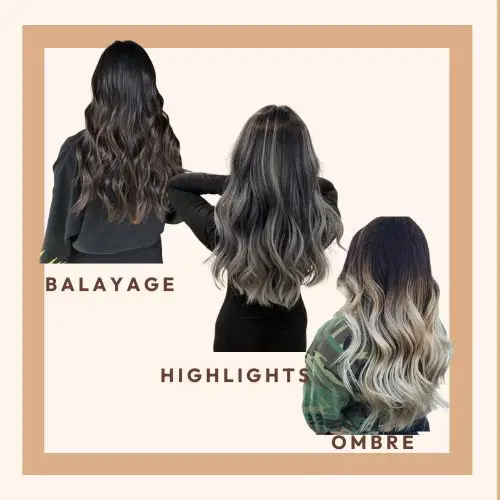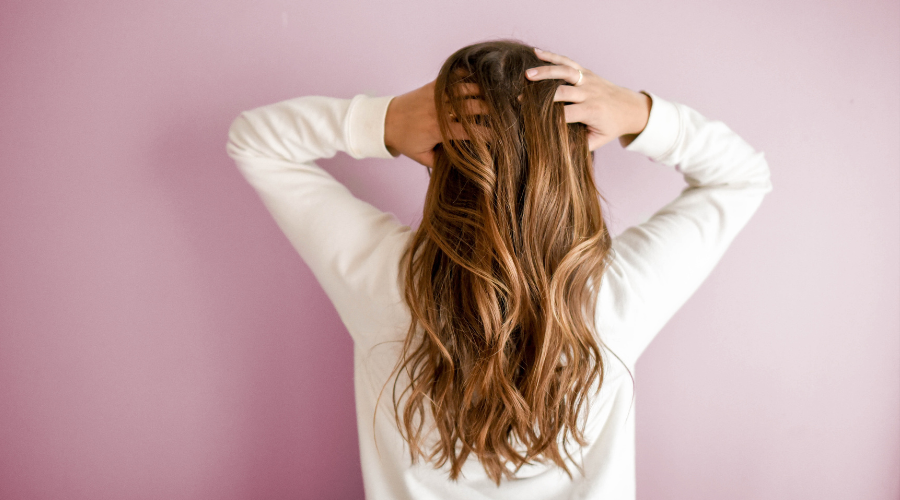Balayage vs. Ombre vs. Highlights: Which Hair Colour Trend is Right for You? – Are you sick of your lifeless, drab hair? Hair color is the secret weapon for gorgeous hair, but how do we choose which hair color is best and suitable for our hair? In this article, we explore the difference between Balayage, Ombre, and Highlights, and also explore Which Hair Colour Trend is Right for you. So, if you are on the fence, which is the right coloring method for you? Here we explore everything you need to decide. Prepare to have your hair transformed by Naomi’s Headmasters!

Balayage, Ombre, and highlights are always in trend and style; therefore, someone says balayage, highlights, or ombre locks. But people are still not sure about the differences between
Balayage vs. Ombre vs. Highlights. Therefore, we make this blog to solve your problem regarding Balayage vs. Ombre vs. Highlights: what is the difference, and which one is right for your hair?
What is the Difference Between Balayage, Highlights, and Ombre?
When it comes to choosing hair color, the terms like Balayage, Highlights, and Ombre are often used interchangeably, but they are not the same.
Balayage Hair | A Natural, Sun-Kissed Glow
“Balayage” means “sweep” in French. The process of using a brush to apply color to hair while highlighting or coloring it is known as “balayage.” The free-hand painting method called “balayage” is used to apply color to specific strands. Starting very fine at the top of the hair and progressively thickening through the mid-lengths and ends, the color application starts roughly two inches from the roots and gets heavier as it goes down the strands. Balayage highlights, as opposed to traditional foil highlights, concentrate more on the ends of the hair and become blended or feathered out as they go up.
The underside of each hair section stays darker because the bleach color is concentrated on its surface, giving the hair a more natural appearance and softer, less obvious root regrowth. It can be applied to shorter hair as well, but it works best on medium-length to long hair, beginning an inch or two from the root.
It Is Best For Those:
- People who favor a natural, soft appearance
- People who desire a style that requires less upkeep and touch-ups
- Anyone seeking a delicate yet elegant color shift
Pros:
- Grows out organically with no discernible regrowth lines.
- Requires fewer trips to the salon than traditional highlights.
- Works on all lengths and types of hair.
Ombre | A Bold and Striking Gradient
The French word “ombré” also means “to shade.” The term “ombre” refers to a dip-dye technique where the hair smoothly transitions from the darkest to the lightest shade. This creates a gradient color transition without a noticeable dark-to-light line.
Although color melting can be done with natural shades, it’s a great way to switch up your appearance with a vibrant color like teal, violet, or bright pink. Any color of the rainbow looks stunning with a color melt!
This styling is best for those:
- People who adore striking, eye-catching hair colors
- People who desire a strong contrast between the roots and the ends
- Those who desire a fashionable yet carefree appearance
Pros:
- requires few touch-ups because the roots stay natural.
- It complements both delicate and striking color schemes.
- gives the hair more depth and dimension.
Cons:
- It can appear harsh if not properly blended.
- For darker hair, lightning may be needed in several sessions.
Highlights | Classic and Defined Brightness
In order to create contrast, highlights entail lightening particular hair strands with foils or a cap. To create different degrees of dimension, they can be applied in different thicknesses and locations. Partial highlights add brightness to specific areas, while full-head highlights produce a lighter overall effect.
Highlights are the best option for those:
- Those who desire a starker contrast
- Anyone who wants to add some color to their hair without altering its natural color
- Those who don’t mind routine maintenance
Pros:
- Produces a lighting effect that is more controlled and organized.
- Works well for both light and dark hair colors.
- Adaptable to bold or subtle outcomes
Cons:
- Needs regular upkeep to prevent obvious root regrowth.
- It can cause more harm if done frequently without taking good care of your hair.
Quick Differences Between Balayage vs. Ombre vs. Highlights
| Features | Balayage | Highlights | Ombre |
| Application | Hand-painted | Foils or caps | Blended from mid-length |
| Look | Soft, natural | Defined, streaky | Bold gradient |
| Maintenance | Low | Medium to high | Medium |
| Regrowth | Subtle | More noticeable | Blends with natural root |
| Best For | Natural sun-kissed style | Bright, contrasting tones | Bold, modern color effect |
How to Choose the Right Hair Coloring Style for You?
After knowing the differences between Balayage vs. Ombre vs. Highlights, now it’s time to choose the best technique for your hair. Below, we mention some factors to consider while choosing the hair color style:
Hair Type & Texture – While highlights can give fine hair more volume, balayage works well for all hair types. For a smoother gradient effect, ombre works best on medium-length to long hair.
Desired Look – Choose balayage if you want a natural glow. Use highlights for a more pronounced brightness.
Lifestyle & Maintenance – Balayage is a fantastic option if you like a low-maintenance look. Touch-ups are more necessary for highlights, particularly for lighter shades.
Skin Tone – While cool-toned shades like ash blonde or platinum look best on fair complexions, warmer tones like honey, caramel, and golden hues complement most skin tones.
Get The Perfect Hair Color
No matter what style you choose for your hair but achieving the best result requires professional expertise. So, go with Naomi’s Headmasters who have experienced stylists and specialize in Balayage, highlight, and Ombre.
FAQs About Which Hair Colour Trend is Right for You: Balayage, highlight, and Ombre?
How do we know which hair coloring technique is best?
You can choose a hair color according to your desired look, such as your hair type and maintenance level. You can balayage for getting a soft, natural glow. For organized contrast and brightness, use highlights. For a striking gradient effect, use ombré.
Which is the most low-maintenance option?
Between Balayage, highlight, and Ombre. Balayage is the most low-maintenance; it is a hand-painted technique that grows out naturally.
Can I combine Balayage with Highlights?
Yes, the combination of Balayage with highlights gives a natural blend of Balayage with the brightness of highlights.






